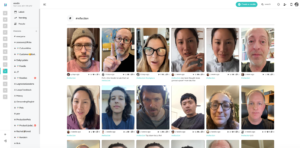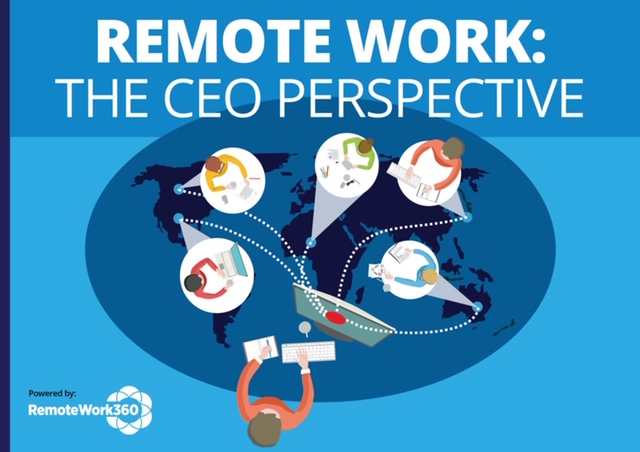Remote Work Super Powers: Maintaining Creativity
- Home
- Supplier Directory
- Attendance & Monitoring
- Collaboration & Communication
- Cloud Telephony & VOIP
- Collaboration & Secure File Sharing
- Communication Software
- Creative Tools
- Culture Building
- Interactive presentations/screen sharing
- Messaging Tools
- Online Training
- Productivity
- Project Management
- Shared workspaces
- Time Tracking
- Video Conferencing
- Virtual Water Cooler
- Web Developer tools
- Finance/Accounting
- HR/Talent Management
- IT
- Managing Remote Teams
- Productivity
- Project Management
- Remote Workplace Wellness
- Sales & Marketing
- eNewsletter
- Events / Education
- About Us
- News
Creative Tools
ByRachel Lanham
Rachel Lanham from Voodle brings you the first instalment of a new blog series, in which she busts the myths around remote work and helps you flex your remote work super powers. This week:
Maintaining Creativity When Working Remotely
Myth: creativity only happens in a crowded room, at a white board and with a bowl of MnM’s
Reality: brainstorming in a conference room is literally thinking inside the box
Myth: innovative ideas are a result of serendipitous moments in office hallways and by water cooler
Reality: when seeking the next big idea you probably shouldn’t rely on luck
As companies became “suddenly remote” they quickly experienced the perks–and the challenges–of distributed teams. Concerns about a drop in productivity were immediately dashed as the data showed teams were equally or more productive. Budgets were put in place for building/maintaining culture and alignment in a remote environment and everyone took a moment to breath.
Now that teams have settled into working remotely, leaders have begun to wrestle with the topic of creativity. Their question: would creativity simply disappear because collaboration had gone entirely remote? It’s common knowledge that alone-time is perceived as good for getting deep work and action items done, while together-time is perceived as ideal for idea generation and strategy development.
While great ideas are often catalyzed by building upon sparks from team conversations, it’s time to challenge the assumption that ideation somehow benefits from being forced to happen in a certain time and place. When we launched Voodle, our early adopters coined the terms “voodle-react” and “voodle-storm” to describe the process of asynchronously ideating on a topic using short video.

If you think about work environments as operating systems, there is an OS for the in-office experience and another for remote work. “I’m seeing a lot of companies trying to transition to remote and they’re essentially trying to copy and paste an in-office environment and just replicate that remotely, which is a pretty poor way to go about it,” says Darren Murph, Head of Remote at GitLab. So, it’s not a bad idea to rethink your assumptions around the creative process. Just being together does not automatically translate to breakthrough thinking. Moving ideation to an asynchronous flow may not only accommodate our new remote-working world but it may actually be more effective! Let’s take a look at some of the benefits of creative ideation in a more asynchronous environment:
Max inclusiveness
- Group-think destroyer – Less opportunity for forceful personalities dominating the conversation and decisions
- Introvert-friendly – Posting a quick video explaining your idea is infinitely more doable than interrupting alpha participants in a group setting
- Yes, we’re open – No more “ you had to be there”, geographically dispersed team set ups or personal scheduling conflicts won’t get in the way of a voice being heard
Max creativity
- 31 flavors – All varieties of ideation are accommodated vs. being tuned to the meeting organizer’s preferred method.
- Aha Moments – Scientific research summarized so well by Britt Andreatta shows us that “Aha moments” come when you rest your brain and limit sensory inputs (that’s why many of your best ideas come when you walk in nature or take a shower).
- Higher Volume – Experts say the best way to come up with a killer idea is to generate as many ideas as possible to get started. This is near impossible in a meeting room, people get too impatient and want to move to focusing on the top ideas too soon.
By shifting to asynchronous video ideation, creativity-killing constraints are removed and real magic can happen. What type of VoodleStorm would you start?
If you want to see how video can help your team get more creative, you can try the Voodle platform for free here.
Rachel Lanham is Chief Customer Officer at Voodle, the short async video platform for teams. She is an aspiring “remote-work guru” and is obsessed with the future of work and enabling every worker to feel empowered and connected
Related Posts
An estimated 86.3% of San Francisco employees are working from home, the highest rate among 10 major ...
May 11, 2021
In the third instalment of her blog - you can catch the first, on maintaining creativity here and ...
January 22, 2021
The different “kinds” of remote: finding the right fit your business Covid-19 has turned our world ...
January 14, 2021
RemoteWork360
RemoteWork360.com is powered by Chief Executive Group, which exists to improve the performance of business leaders, build communities and strengthen society.
Latest Insights
COPYRIGHT ©2020 REMOTEWORK360. ALL RIGHTS RESERVED.



